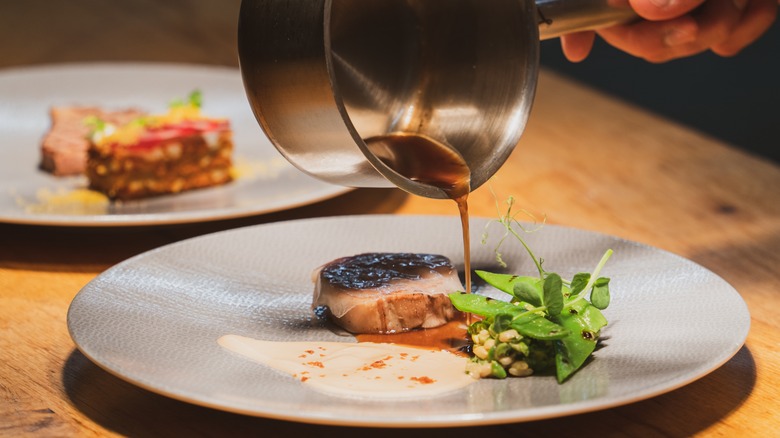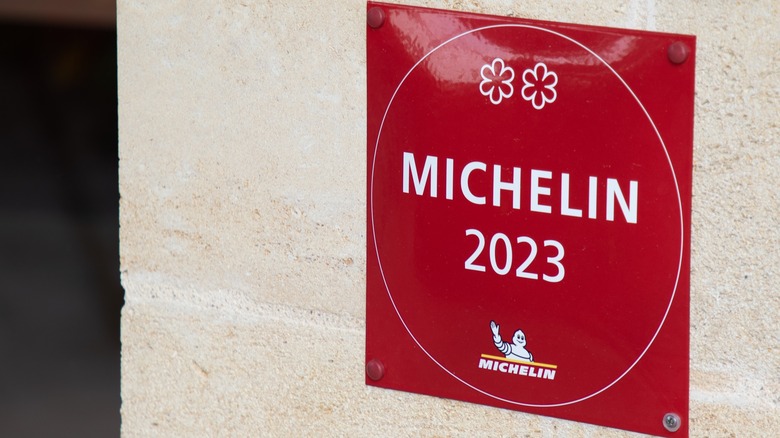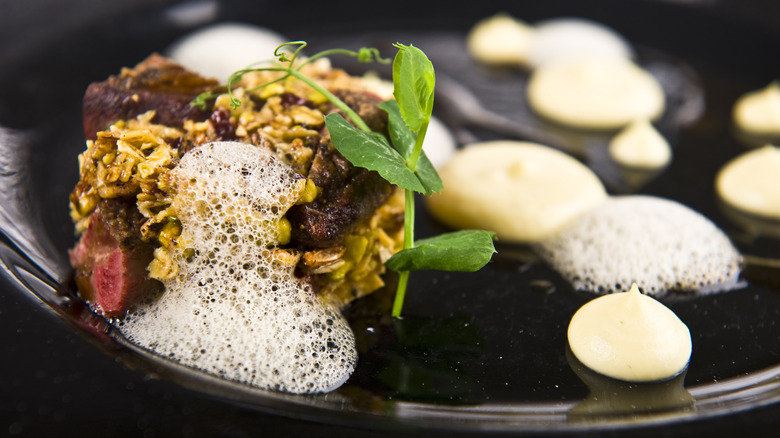How Restaurants Earn Michelin Stars, And What Each Star Means
If you've heard of Michelin stars awarded to sought-after restaurants in places like New York City and Paris, you know that each new star comes with a higher and higher level of prestige. But how do Michelin stars work, who assigns them, and what exactly do they mean? It's time to set any ambiguity aside — we've got answers to the ins and outs of the culinary guide and star-rating system.
You may recognize the name Michelin from advertisements with that marshmallowy-looking Michelin tire guy. Surely, the guide must be different, you might assume. Think again. Launched in 1900, the published restaurant star-rating Michelin Guide was created on the basis that good food is worth traveling for — in fact, it was designed to motivate long drives by mapping out restaurants worth visiting and, along with it, purchases of the French company's tires.
The Michelin Guide has since expanded to countries and metropolitan cities across the world — including Japan, Italy, Germany, and the U.S. (to which the guide came in the early 2000s). To determine which restaurants make the cut, a team of anonymous Michelin Guide inspectors thoroughly assess select restaurants for their culinary quality and ingenuity. After in-depth discussions among Michelin Guide leadership, the restaurant selections and star designations are then agreed upon and released each year.
Each star denotes a level of quality and the worthiness of the trek
After the creation of the Michelin Guide in France, the infamous stars were added to the mix in the late '20s and early '30s. Today, each star serves as an indication of the level of culinary excellence and uniqueness. According to the Michelin Guide, determining factors for its star designations include "the quality of the ingredients, the harmony of flavours [sic], the mastery of techniques, the personality of the chef as expressed through their cuisine and, just as importantly, consistency both across the entire menu and over time." Though the focus of the rating system is the food itself, it is said that a restaurant's atmosphere can literally make food taste better, too.
When it comes to one star vs. three, it really comes down to how worthwhile the restaurant is for a visit. One star denotes that a restaurant is of high quality and is "worth a stop," while two stars signify a worthwhile detour. Three stars, the highest ranking in the guide, recommends a "special journey" to visit the restaurant due to its exceptional nature. And food lovers travel from far and wide to try these one-of-a-kind restaurants.
Any star is an accomplishment, along with other Michelin awards
Due to the guide's high standards and thorough evaluation process, any Michelin star rating is an accomplishment, and sure to drive business for the restaurant that receives it. Michelin stars are often associated with the restaurant's chef, but it's important to note that the star designation is specifically for the restaurant itself — which is assessed annually for consistency. Though fine-dining establishments have typically been a large portion of the guide, now any type of restaurant, cuisine, or service type can be considered for inclusion.
Even so, the Michelin Guide is known to encompass more expensive restaurants — hence their quality ingredients, culinary creativity, and high-profile chefs. However, Michelin does assign other awards that include a wider variety of restaurants. For instance, its Bib Gourmand award is meant for more affordable restaurants that serve three-course meals, and there's also a Michelin plate award for notable food destinations.
Recently the Michelin Guide started designating Green stars for restaurants that already hold a Michelin award and are doing remarkable work related to ethics and sustainability. While any Michelin star or award can increase exposure and popularity for a restaurant, it's also said to create a lot of pressure on the industry, garnering some mixed feelings about the guide. While you can find high-end cookbooks for Michelin-starred restaurants like The French Laundry in Napa, California, the Michelin Guide conveys that the world's best restaurants are worth the road trip.


